Sound waves travel at a certain speed depending on the medium they’re passing through. In air that is 68 °F (or 20 °C to our friends who haven’t yet embraced the superior, American system of measurement) the speed of sound is 1,125 feet per second. (That’s 343 meters per second, ibid). This is why you can see lightning before you can hear it: Because the speed of light is something like eleventy-bazillion feet per second, slower sound must take a moment to catch up with it.
Many of mankind’s inventions travel faster than the speed of sound. These include the bullwhip, the jet airplane, and, of course, the bullet.
When these things achieve a speed that exceeds the magic 1,125 fps mark (in the case of 68 °F air), they issue an explosive sound. We call this a sonic boom. It occurs when sound waves in the air can no longer propogate ahead of the very fast thing that is creating them.
As a society, we haven’t widely implemented supersonic jets for commercial use due to this phenomenon — imagine if every passenger flight passing overhead sounded like Zeus slamming the door after having an argument with his wife. It would be unpleasant for us, and it would drive our dogs positively buggy.
How Does Subsonic Ammo Work?
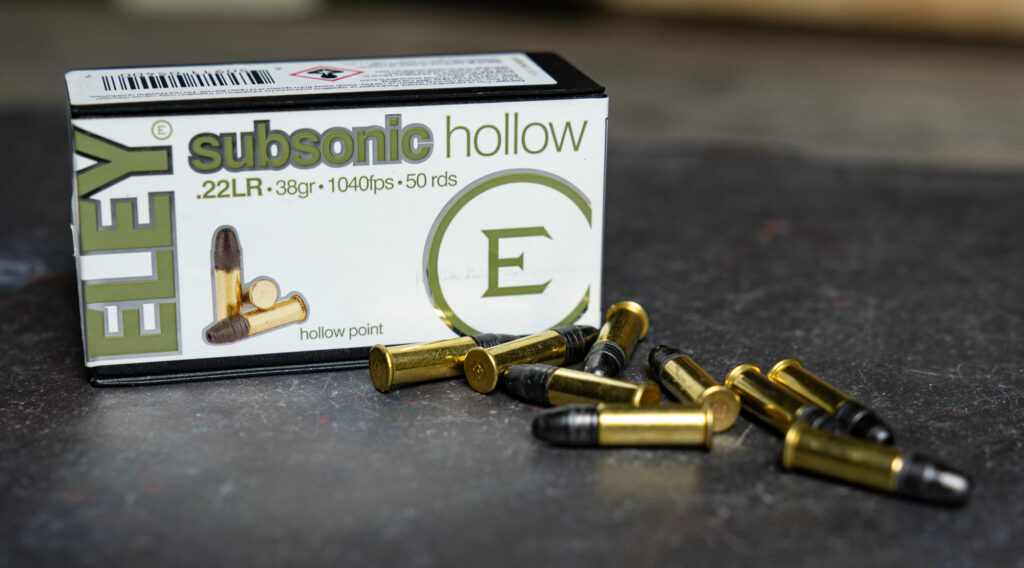
Subsonic ammunition does not break the sound barrier when its bullet exits the muzzle, and as the result does not issue such a jarring noise.
We can consider subsonic ammunition as belonging to two categories:
- Loads that are inherently subsonic
- Loads manufacturers specially make to be subsonic when it normally wouldn’t be
The former category includes calibers such as the 32 S&W (595 fps), the 45 ACP (850 fps), the 380 ACP (1,000 fps), and other calibers such as the 338 Whisper and the 9x39mm that were developed with the express intention of being subsonic. The latter category can include a range of calibers. While the 22 LR’s muzzle velocity typically surpasses 1,200 fps, several loads with a triple digit muzzle velocity are available. Subsonic loadings in 9mm and 300 AAC Blackout are commonly available as well.
How Do They Make It?
There are a couple of ways of making a normally supersonic caliber into a subsonic one. The first is to give it an exceptionally heavy bullet. For example, subsonic 300 AAC Blackout loads typically sport bullets that weigh greater than 200 grains, and 9mm rounds with relatively heavy 147 grain bullets can easily leave the sound barrier intact. The second is to give it a less potent propellant charge. The extreme example of this is Aguila’s powderless 22 LR cartridge, which achieves its minute 420 fps muzzle velocity exclusively via its rimfire primer. It is exceptional in that it doesn’t even provide enough juice to cycle a semi-automatic firearm!
A heavier bullet can provide several perks to performance. That greater mass is less susceptible to wind drift, which benefits accuracy, and also penetrates a target more deeply, which can be crucial for self-defense. But when manufacturers specifically market ammo as “subsonic,” they expect you’ll use it primarily for its relatively subtle report.
Why Use Subsonic Rounds?
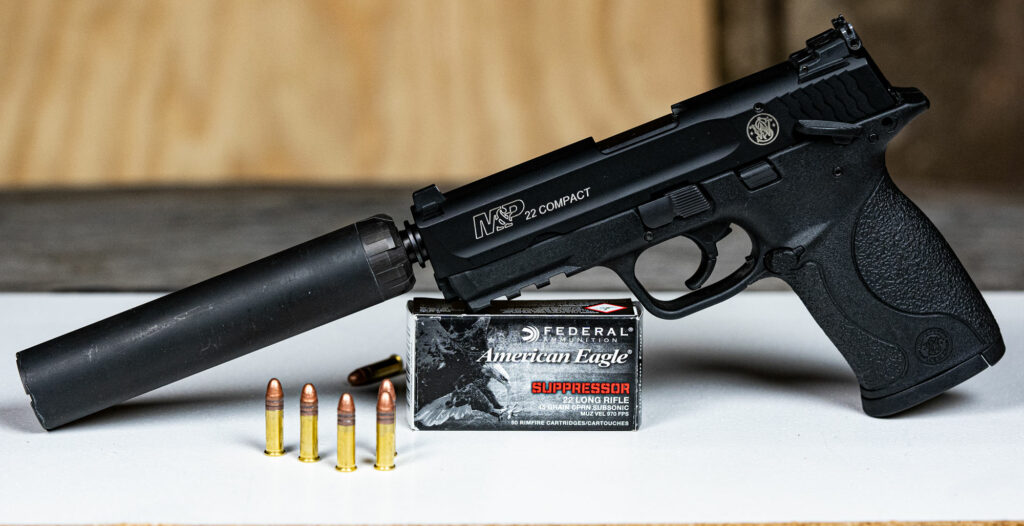
Subsonic ammunition has a lot of uses. Perhaps you live and shoot in an area where very loud noises rinse the ire of neighbors. Maybe you are vacationing in the woods with relatives who are misinformed on how great firearms are. In either case, subsonic ammo will let you enjoy your weapon without trespassing as heavily on others’ deeply cherished sensibilities. Subsonic ammo is also an excellent way of familiarizing younger, more skittish shooters with firearms. A child would much rather be introduced to shooting with a “pzoo” than with a “BANG!”
Subsonic ammo is especially rewarding when used in conjunction with a suppressor. (Also known as a silencer, depending on your preference in nomenclature). Let’s forego the political discussion when raising the subject of suppressors in favor of a brief explanation of how they work.
When you fire an unsuppressed weapon, it quickly releases a lot of hot, pressurized gas into the environment. That release makes a very loud noise. A suppressor is essentially a series of expansion chambers which cool and disperse that gas before it can exit the muzzle. This effectively muffles it. A suppressor can also reduce muzzle flash and recoil. You attach many suppressors via a thread at the end of the barrel. Some, however, are built right into the end of the barrel.
It should come as no stretch to the imagination that subsonic ammo requires a suppressor to muffle substantially less noise than supersonic ammo would. This means you can enjoy the quietest shooting you are able to if you implement subsonic ammo and a suppressor together. But it will still be loud! Don’t be led astray by the creative licenses Hollywood films take. You can’t launch someone through a plate glass window with a blast from a 12 gauge. You can’t blow up a car with one well placed shot from a 9mm and you’re certain to be outed almost immediately while firing a suppressed weapon, even if you are a 00 agent.
How Loud Is Suppressed Ammo?

To put things in perspective, a suppressed rifle firing subsonic 22 LR ammo will still issue a report of approximately 120 decibels. That is as loud as an ambulance’s siren. It’s much louder than what OSHA allows workers to be subjected to for extended periods of time.
Larger calibers, which include essentially every other cartridge that there is, will be even louder under the same circumstances. So know your firearm will still be plenty noisy no matter how you are shooting. In other words: you should still wear ear protection.
Of course, when it comes to loud noises, less is more. If you anticipate you may have to fire a weapon indoors under circumstances where you can’t first put on ear protection, your delicate eardrums will thank you if you’ve got subsonic ammunition, a suppressor, or ideally both.
Which type of subsonic ammo should you use? CCI makes a variety of quality subsonic 22 LR cartridges, including loads meant for hunting or target practice.
Federal, Winchester, and Remington all offer several subsonic rimfire and centerfire cartridges as well. The subsonic ammo worth favoring above all others ought to be determined according to your experience alone. Lucky for you, there are a number of reputable online retailers who will sell it to you. You might imagine which one we’d most recommend.
Popular Subsonic Ammo for Sale
Subsonic 22 Long Rifle:
CCI 40 Grain HP Subsonic 22 long rifle loads
CCI Small Game 40 Grain Lead Hollow Point 22 long Rifle Ammo
Winchester 45 Grain M-22 Subsonic Ammo for 22lr
9mm Subsonic Ammo
Fiocchi 158 Grain FMJ Subsonic 9×19 ammo
Magtech 147 Grain FMJ-FN Subsonic bulk 9mm Luger ammo
300 Blackout Subsonic Ammo
Federal 200 Grain OTM 300 BLK Subsonic Ammo





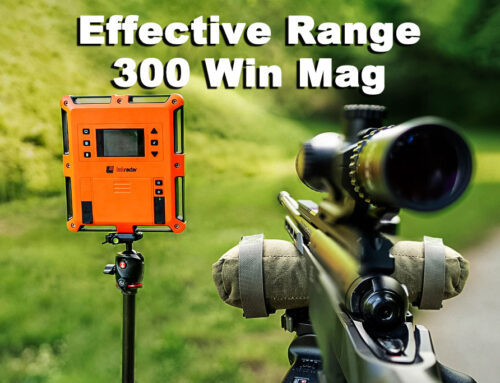
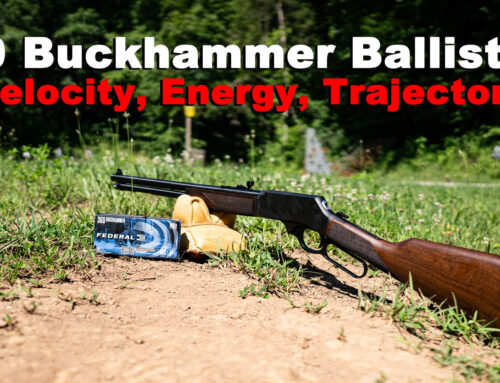
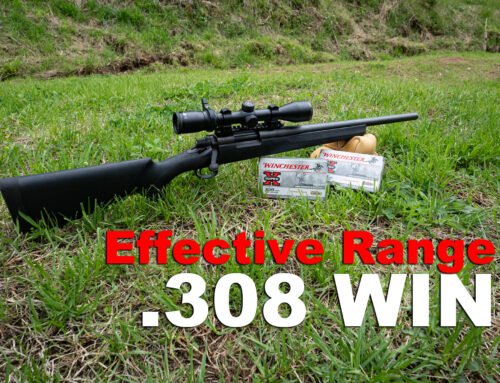
Would anyone know where I can purchase 40 s&w subsoniq rounds
Hi Ali, the vast majority of all 180 grain commercially loaded 40 S&W cartridges are subsonic. I would shy away from really hot loads to make sure you stay subsonic (Avoid +P).
You can find a bunch of 180 grain 40 S&W for sale here.
Do they manufacture .32 ACP sub-sonic?
Yes, Underwood Ammo manufactures a 32 ACP load that is subsonic.